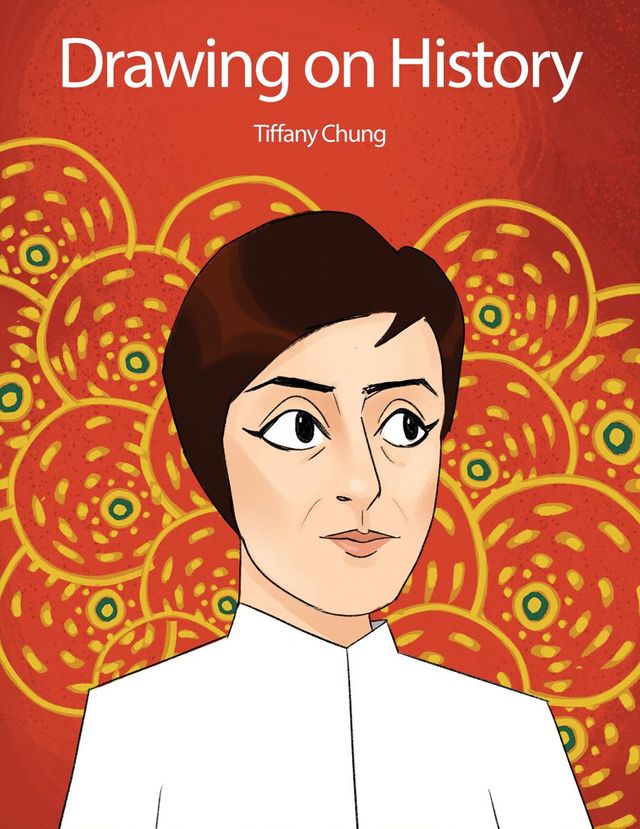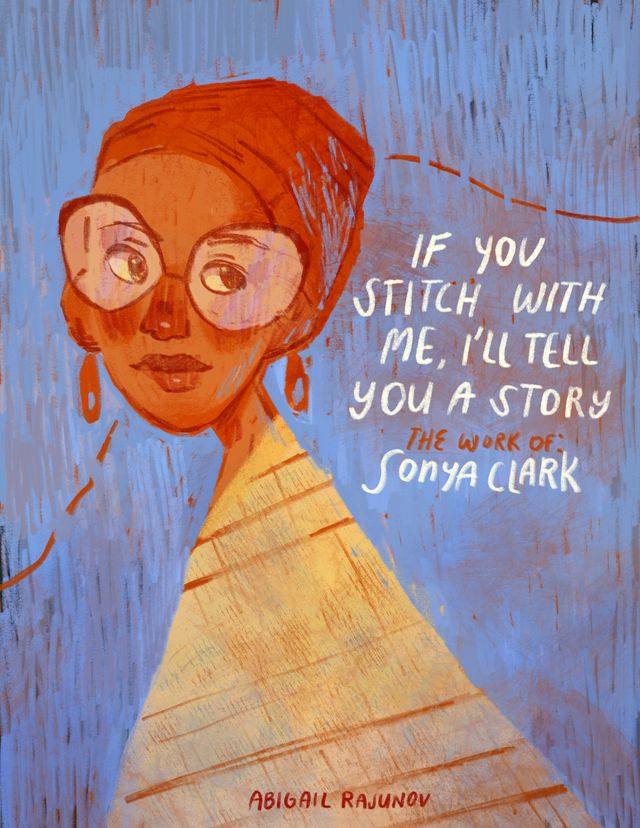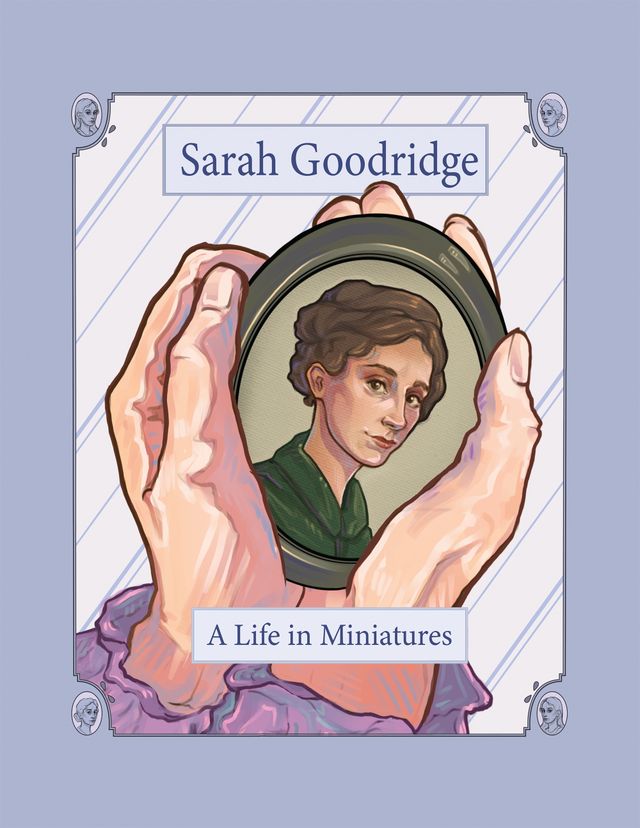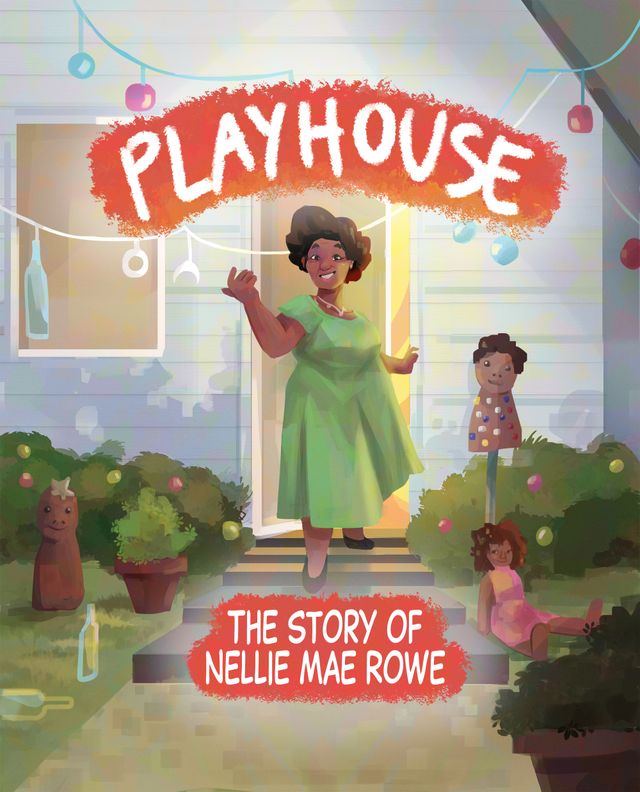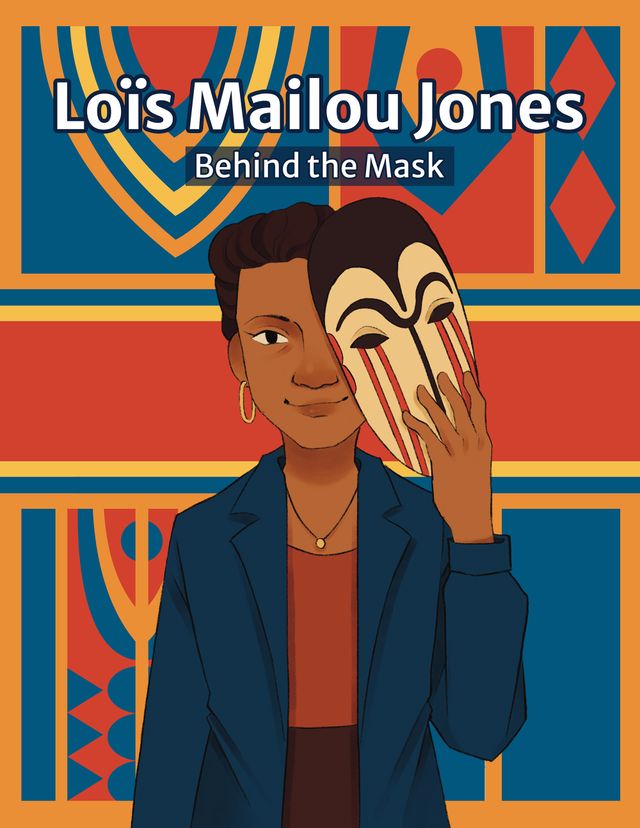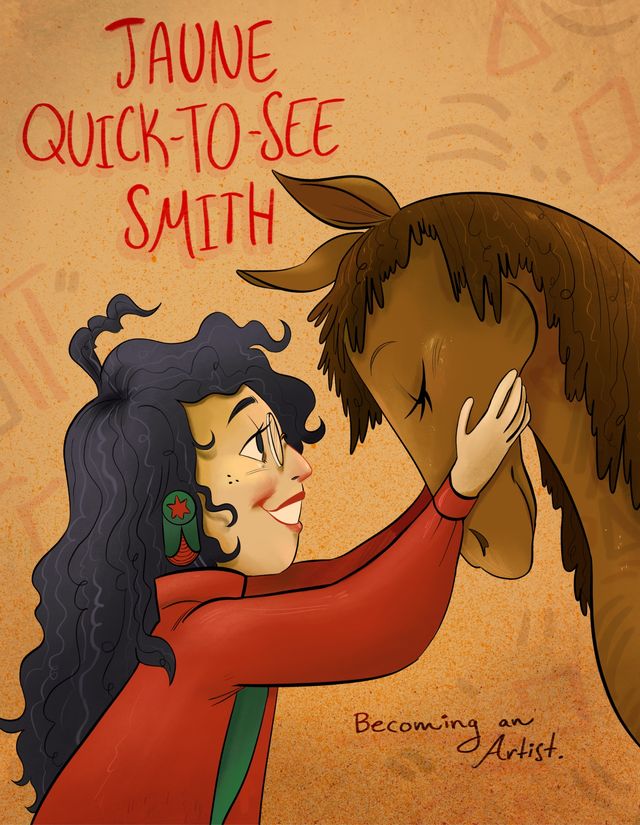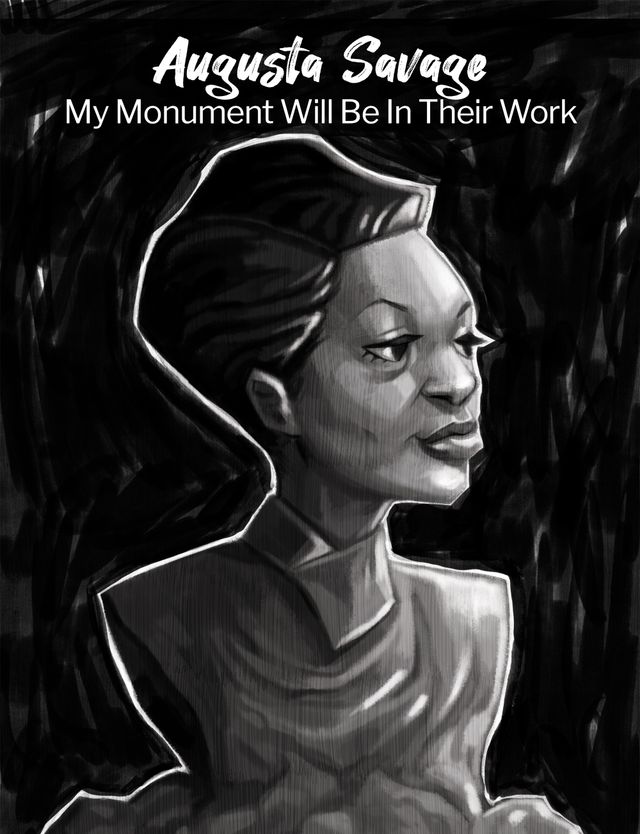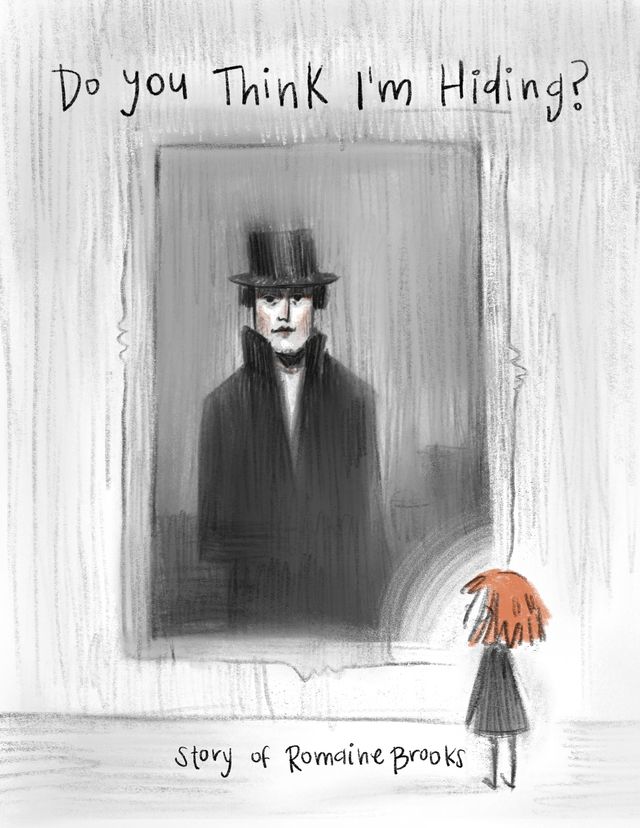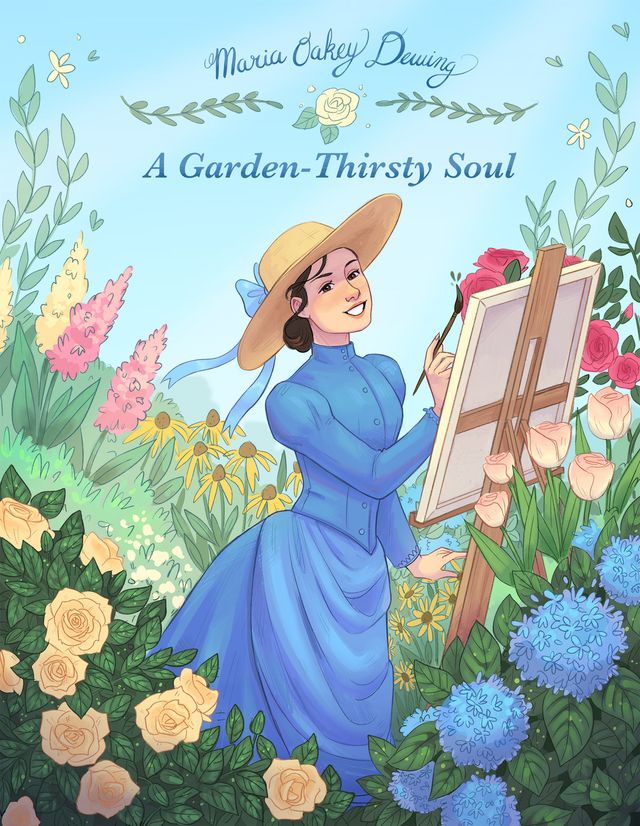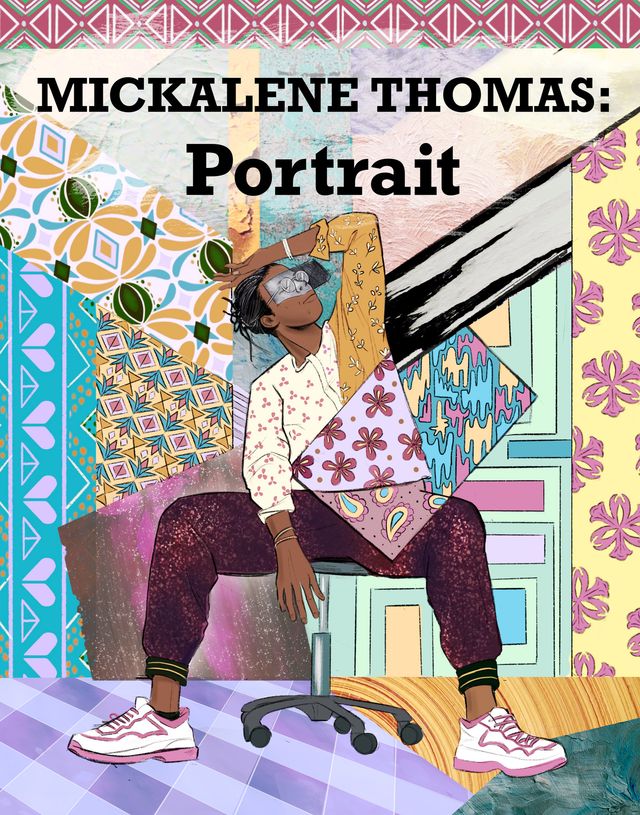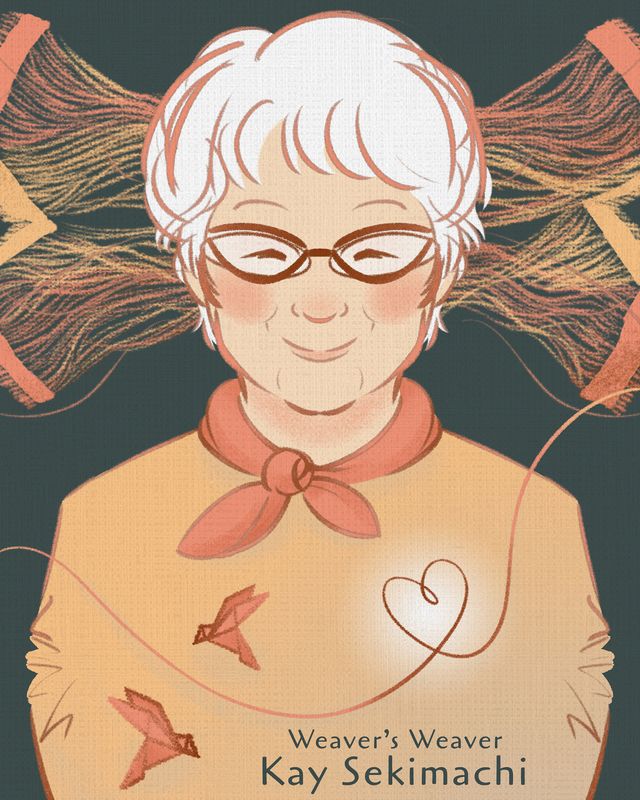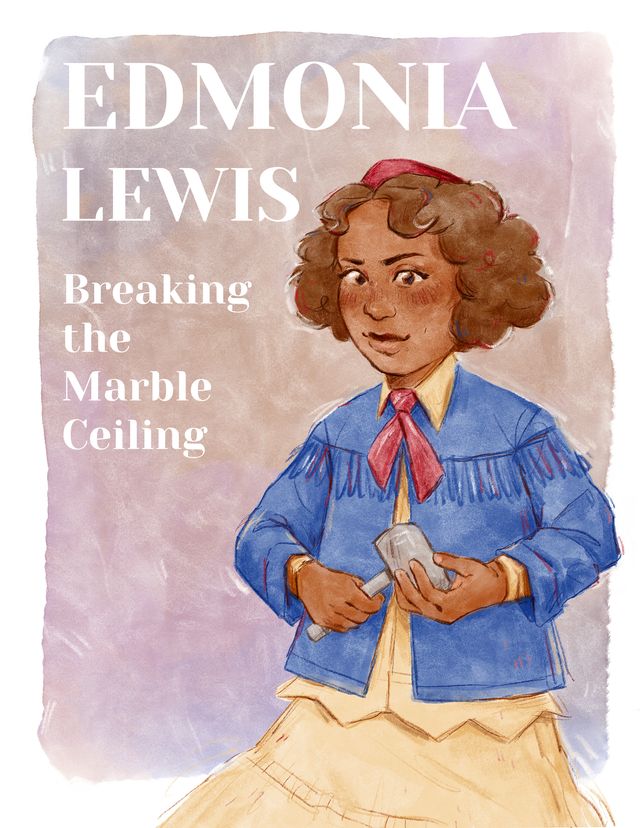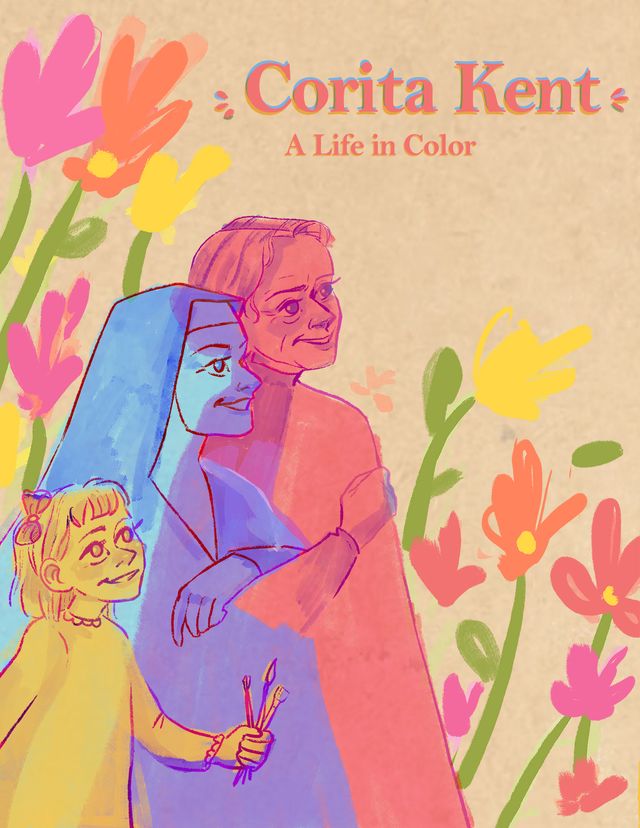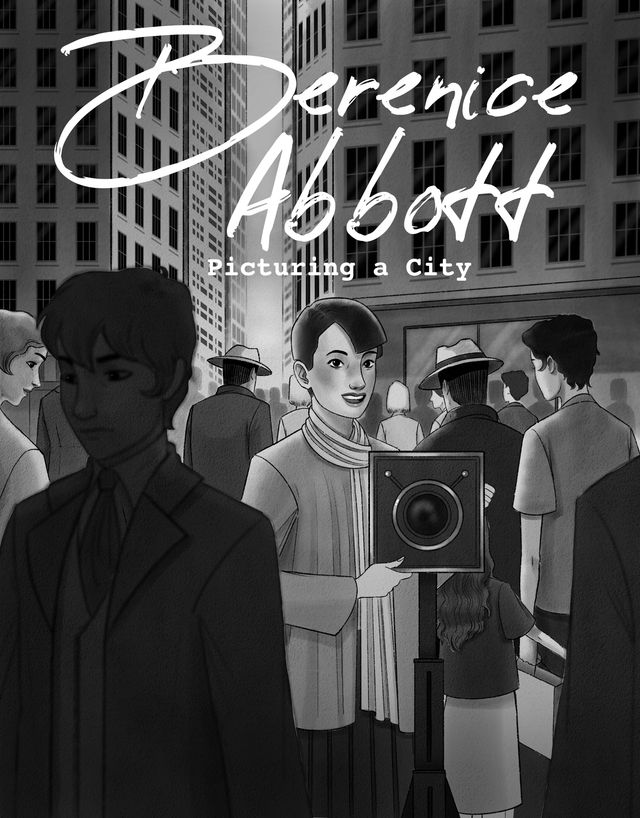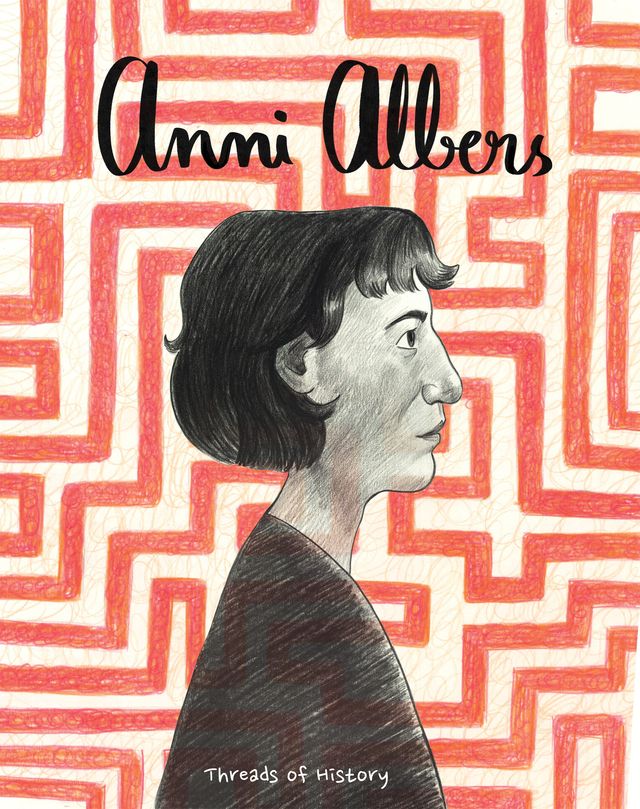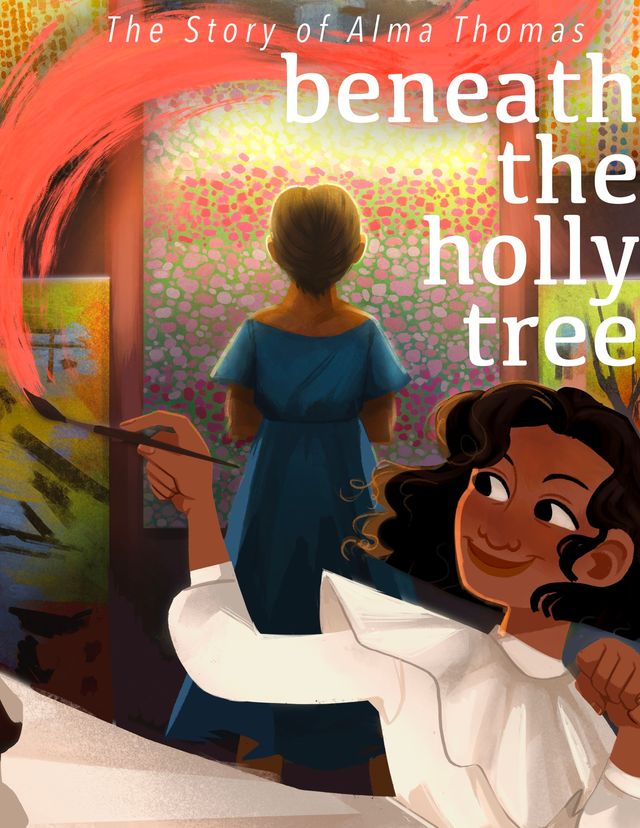An Overview
Chitra Ganesh was born in NY to Indian immigrant parents. She draws from Indian mythology, literature, and popular culture to reveal feminist and queer narratives from the past and to imagine new visions of the future.
This comic is part of a series Drawn to Art: Tales of Inspiring Women Artists that illuminates the stories of women artists in the collection of the Smithsonian American Art Museum. Inspired by graphic novels, these short takes on artists’ lives were each drawn by a student-illustrator from the Ringling College of Art and Design.
We invite you to read the comic and share it with your friends and young people in your life.

Cover
A deep purple background sits behind long snaking swirls of pastel rainbow with large white flowers outlined in pink floating between. Several flowers have an eye in their center, and they vary in size throughout the illustration. A woman with a medium skin tone and long black wavy hair sits in the middle of the page. She emerges from a bunch of flowers, her torso resting between the petals. She is wearing a black long-sleeved shirt with red, yellow, and black-striped details around the neckline and sleeves. She wears a small stud nose ring, black winged eyeliner, and dark red lipstick. She rests her head in her left hand as her right hand gently lays in front of her reaching for a rainbow beneath. Behind her is a beige circle with an orange, yellow, and black stripped frame. Her head is centered in the circle. A beige rectangle outlined in black is drawn in the bottom right corner of the page, covering the woman’s left arm and some of the background. In this rectangle the title text reads: "Chitra Ganesh" is written. Underneath, additional text reads: "Brooklyn, Bollywood, and the Rainbow Path."

Page 1
Background: This page is broken into three panels, one in the top third, one in the middle, and one at the bottom of the page. The background of these panels is a blue gradient, from a bright sky blue at the top to a dark royal blue at the bottom. There are six beige text boxes with black font scattered across the page.
Panel 1
This illustration shows a young girl sitting cross-legged reading a large red book. She has a medium skin tone and long black hair with bangs. She is wearing a pink T-shirt, blue shorts, and white socks. Next to the young girl is a stack of colorful books. Behind her is a large pastel rainbow weaving between two large structures. On the left is the Taj Mahal, with beige walls, large spires, and big dark gray arched windows. The rainbow then travels to the right between the large gray brick archways of the Brooklyn bridge. A yellow sun, fluffy white clouds, and yellow flashes sit behind this scene on the sky-blue background. A text box at the top left reads: "Born in Brooklyn, NY, to immigrant parents, Chitra loved reading books and comics." A second text box at bottom right reads: "The comics brought stories to life in wonderful colors."
Panel 2
A mythical futuristic scene is illustrated against a purple-blue background. On the left there is a gray spaceship, with red details, taking off into a swirly coral fog. Three characters are drawn, a woman wearing a pink draped traditional Indian dress and gold jewelry reaching up with her right hand to touch the top of the rocket. The woman to the right is wearing a red sash and bright green t-shirt. She has red hair and is holding a silver shield and sword. Next to her is a male warrior who is gesturing up with a gold sword in his right hand and is holding a large gold shield in front of him with his left hand. He is wearing a gold helmet with a dark purple plume. There are big yellow lightning bolts coming from the orange and yellow sun. Black arrows also come down from the sun. The characters stand in the same stripped coral fog that the rocket is surrounded by. A flying saucer flies in front of the warrior on the right. A text box in the upper right reads: "On summer vacation to India, she spent hours reading "Amar Chitra Katha" (Immortal Picture Stories), a comic series about Indian myths, history, and folktales. She loved the stories of gods and goddesses at work and play." Another text box to the right of the illustration reads: "They resonated with the Greek myths and sci-fi TV shows that she also loved."
Panel 3
A large black movie camera is drawn in the left corner of the panel. A long strip of black and gray film weaves its way from the left side of the panel up to the middle of the right side of the page. Following this film are scenes from Bollywood movies. There is a drawing of a man and woman with medium skin tones and black hair about to kiss, the man with his hand on the face of the woman. To the right of them are two women dancing wearing traditional Indian dress, one in red and green and one in gold. They both are wearing lots of bangles and jewelry. Between the montage scenes are small pink flowers and yellow sparks, floating on the dark royal blue background. The top text box reads: "Chitra's father was crazy about Bollywood, Indian movies that featured singing and dancing. Chitra became interested too. This was before VCRs and DVDs, so they would watch Bollywood movies together at a local theater in Queens!" The text box below the illustration reads: "Back in the 1980s, there was barely any representation of any Asian people in media."
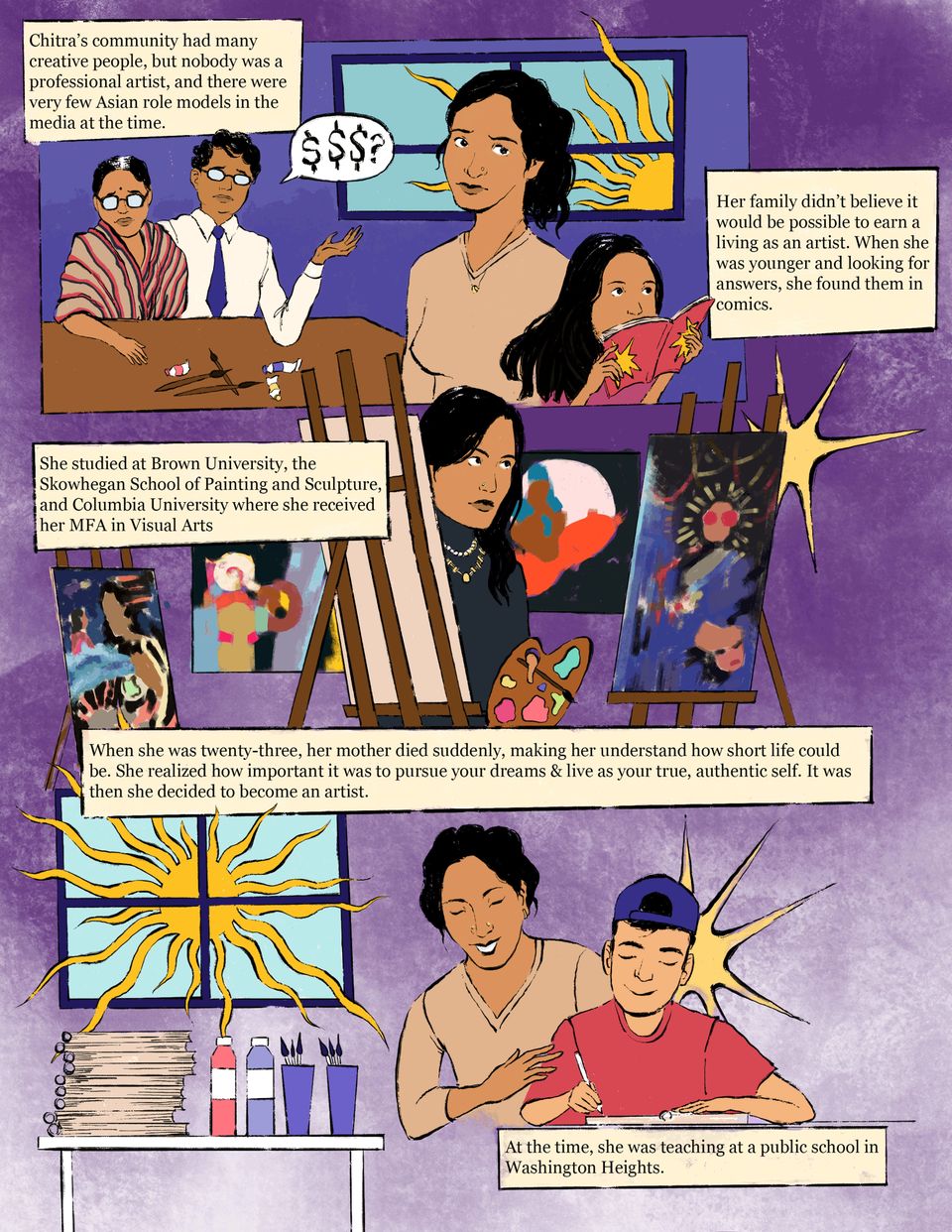
Page 2
Background: There are three panels on this page. They all sit against a purple textured ombre background that goes from dark purple at the top to lavender at the bottom. There are five beige text boxes with black text.
Panel 1
This panel has two overlapping scenes. On the left of the panel her parents—a middle-aged man and woman with medium skin tones, black hair, and glasses sit at a wooden table. The woman is wearing a striped shawl and has her right hand resting on the table. The man is wearing a white button-down shirt and blue tie. He gestures with his left hand leaning on the table. A speech bubble with dollar signs ($$$?) comes from his right side. Two tubes of paint and three paintbrushes sit on the table in front of them. Chitra as a young woman, stands staring sadly out of the page. She has curly black hair in a ponytail and is wearing a peach V-neck long sleeve shirt. Behind her is a window showing a bright teal sky and large yellow sun. Overlapping with the adult Chitra is Chitra as a young girl. She has long black hair and is wearing a pink T-shirt. She is reading a red comic book with yellow details. The text box in the upper left corner reads: "Chitra’s community had many creative people, but nobody was a professional artist, and there were very few Asian role models in the media at the time." A second text box to the right of the panel reads: "Her family didn't believe it would be possible to earn a living as an artist. When she was younger and looking for answers, she found them in comics."
Panel 2
Chitra as a young woman stands in the middle of the panel looking to the right. She is wearing a black turtleneck with layered necklaces. She is standing behind a wooden easel and is holding a wooden paint palette with splashes of neon paint on it. Four of her paintings sit around her, two on easels and two floating on the purple background. The paintings show abstract scenes with bright colors and central figures with medium and dark skin tones. A text box in the upper left of the panel reads: "She studied at Brown University, the Skowhegan School of Painting and Sculpture, and Columbia University where she received her MFA in Visual Arts."
Panel 3
On the left half of the panel there is a large window with a bright blue sky and large yellow sun whose streaks overlap with the window frame into the room. Under the window is a white table with sketchbooks stacked on the left side and paint tubes and brushes on the right. To the right of the table is Chitra as a young woman, with her dark hair in a bun, wearing a peach V-neck long sleeve shirt. She is smiling down at the table in front of her and has her right hand encouragingly patting the arm of the boy in front of her. The boy has a light skin tone and dark hair pushed under a dark blue backwards baseball hat. He is wearing a red t-shirt and is drawing in a sketchbook on the table in front of him, his right hand holding a pen, and his left resting on the open pages. A text box at the top of the panel reads: "When she was twenty-three, her mother died suddenly, making her understand how short life could be. She realized how important it was to pursue your dreams & live as your true, authentic self. It was then she decided to become an artist." A text box under the desk that the boy is sitting at reads: "At the time, she was teaching at a public school in Washington Heights."
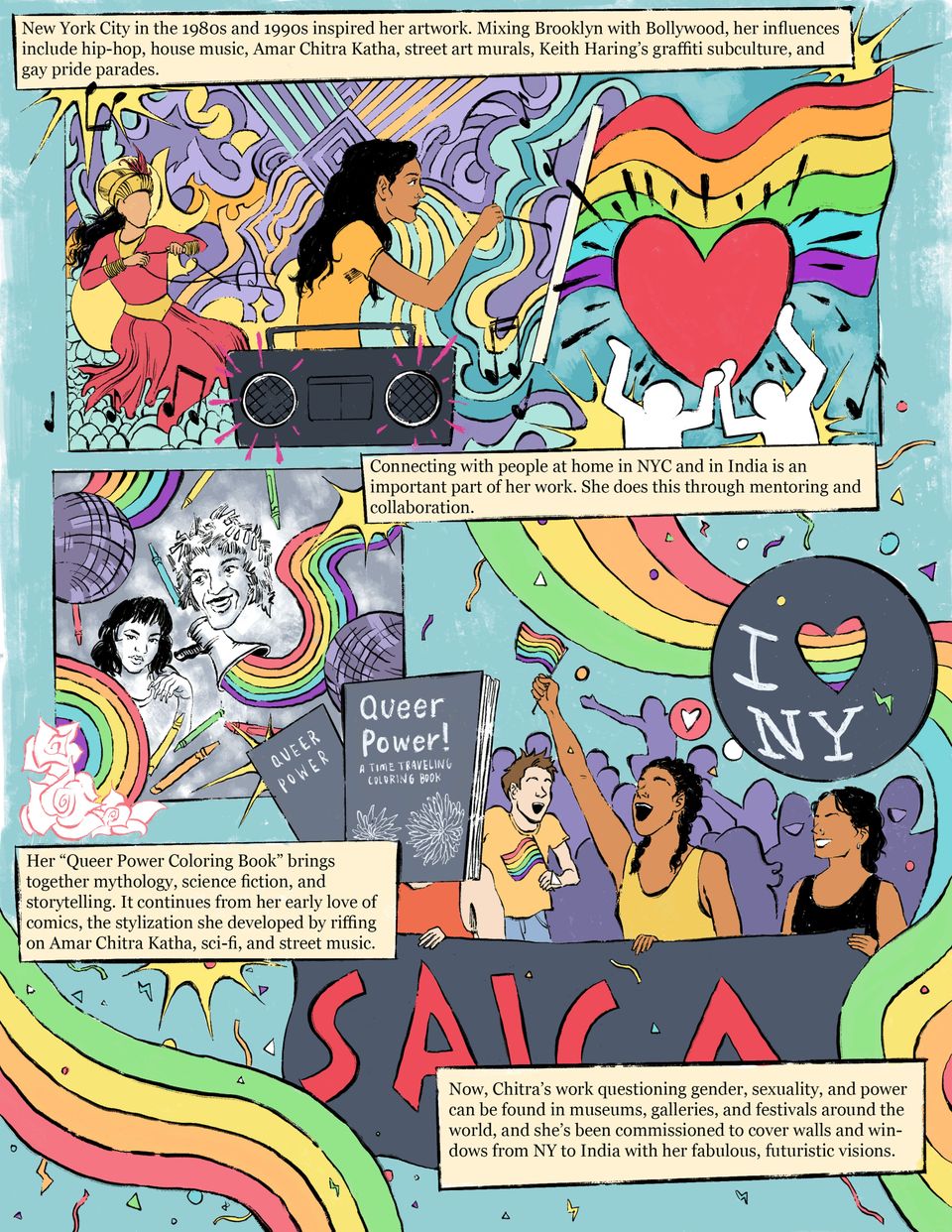
Page 3
Background: This page is broken up into three panels, one in the top third of the page, one on the middle left, and one in the middle right and bottom third of the page. Behind the panels is a light-blue background with two large pastel rainbow swirls. One of the rainbows begins at the bottom of the first panel and arcs toward the bottom right corner and the other rainbow starts on the left of the page and ends at the bottom left. There are four beige textboxes with black text.
Panel 1
This panel is broken up into two sections. On the left there is a woman with a medium light skin tone and long black hair wearing a long red dress and a gold helmet with a red plume in it. She is holding the reins to something in front of her. Behind her is an abstract patterned sky with light purple, dark purple, light blue, and yellow pointed swirls. These swirls become a striped diagonal pattern as they move to the middle of the panel. The ground under the woman is made up of blue rounded humps, meant to look like rocks or rolling clouds. In a separate image to the right of the warrior woman is Chitra as a young woman, with long black hair, wearing a yellow short sleeve shirt. She is facing the right of the panel and is painting the background. In front of her is a black boom box with pink lines and black musical notes coming out of the speakers. This transitions into the right side of the panel where there is a large LBGTQ+ rainbow pride flag waving against the blue background. Overlapping the pride flag is a rendering of Keith Haring’s "Men Holding Heart." A large red heart is held over the heads of two abstract white cartoon figures. Around this side of the panel there are yellow spark bursts. At the top of the page a text box reads: "New York City in the 1980s and 1990s inspired her artwork. Mixing Brooklyn with Bollywood, her influences include hip-hop, house music, Amar Chitra Katha, street art murals, Keith Haring’s graffiti subculture, and gay pride parades." Another text box at the bottom of the panel reads: "Connecting with people at home in NYC and in India is an important part of her work. She does this through mentoring and collaboration."
Panel 2
The square panel in the middle left of the page shows an abstract depiction of the illustrations from Chitra’s coloring book. The background of the panel is gray and white and there are black sketches of a young girl with bangs and long nails, the face of queer activist, and a megaphone. Three rainbow swirls adorn the panel, one in the upper left, one emerging from the megaphone, and one in the bottom left of the page. Two disco balls, one in the top left and one in the middle right are also part of the scene, as are three white flowers with pink outlines in the bottom left corner and a yellow burst in the upper right. Crayons are scattered on top of the coloring page. Overlapping the bottom right of the panel are two of Chitra's coloring books. The books are gray with flower outlines on the cover and say "Queer Power! A Time Traveling Coloring Book." A text box under the panel reads: "Her 'Queer Power Coloring Book" brings together mythology, science fiction, and storytelling. It continues from her early love of comics, the stylization she developed by riffing on Amar Chitra Katha, sci-fi, and street music.”
Panel 3
This panel takes up most of the page. A large group of people stand at the bottom right of the page holding a large gray sign with red text that says "SALGA" (an organization serving the Desi queer community of NYC). Holding the sign are three figures. On the left there is a person with a light skin tone wearing an orange tank top, whose head is obscured by the coloring books of panel 2. In the middle Chitra wears a yellow tank top, holding a small pride flag above her head with her right hand and yelling with her mouth open wide. To the right is a woman with a medium skin tone and curly short black hair who is wearing a black tank top and smiling at the woman in the middle. Behind them is a man with a light skin tone and short light brown hear wearing a yellow t-shirt and blue jeans who is holding a pride flag and excitedly looking at those holding the sign. Behind them is the silhouette of a large group of people, represented by purple outlines. Above the woman on the right is a dark gray circle with ‘I [heart icon] NYC” written on it in white, with rainbow stripes filling the heart. Throughout the scene, overlapping with the sign, people, and rainbow swirls is multi-colored confetti. A text box overlapping with the SALGA sign reads: "Now, Chitra's work questioning gender, sexuality, and power can be found in museums, galleries, and festivals around the world, and she’s been commissioned to cover walls and windows from NY to India with her fabulous, futuristic visions."

Final page
The background of this page is a deep purple faded in some areas to mimic paint strokes. In the center there is a rainbow. In the arc of the rainbow is a white flower with pink outlines. Under this white text reads: "Illustrated by Ati Gor." Two hands with a medium skin tone emerge from the bottom of the page, reaching toward this center image. The hand on the left is bent to show the palm, while the right hand is flat against the page. The hands are decorated with drawings of eyes, flowers, and stars on the back and palm, and striped rings around each finger.














